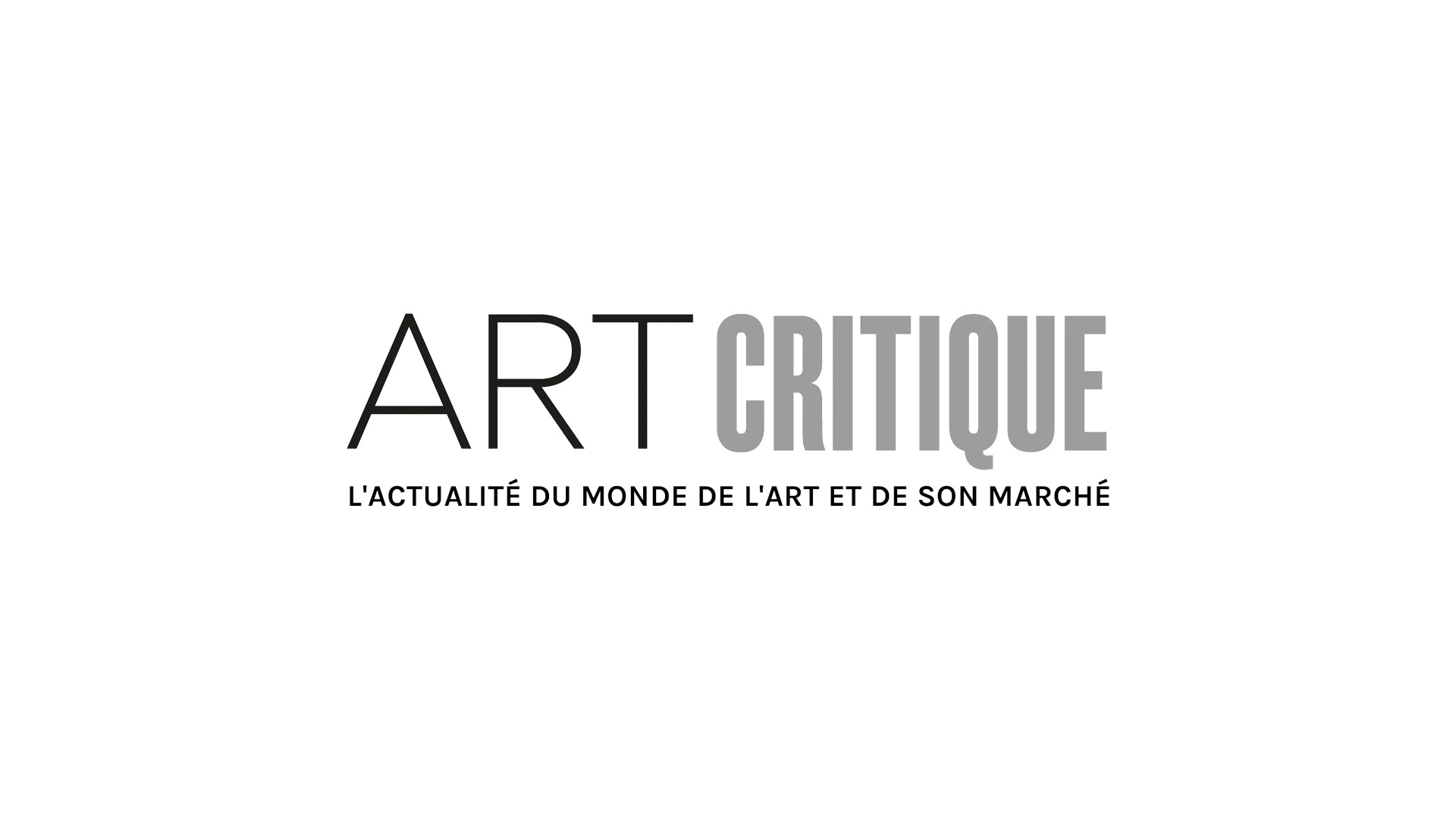In anticipation of the exhibit beginning on January 17, 2019 dedicated to the geometric abstract painter Geneviève Claisse who died in April of last year, the Denise René Gallery’s Marais space offers an exhibit focusing on the oblique. The gallery, which will soon be celebrating its 75th anniversary, draws on its impressive collection of abstract pieces in the geometric genre to establish this theme.
The oldest piece in this exhibit, a sculpture of black iron called Problème de forme made by artist Robert Jacobsen in 1953 had previously been featured in the historical exhibit held by the gallery in 1955. If at that time it had been shown alongside works by Duchamp, Calder or Vasarely, it would now be similar to contemporary works, especially Pe Lang’s Color | nº 21 1+1EA created in 2018. With its elegant movement, this minimal sculpture whose mechanism was made by hand and where each element of the structure was necessary to its functioning as a whole, fits perfectly into the constructivist tradition.
Faithful to The Movement, the name of the show that made the gallery famous, their current exhibit features many other mobile art pieces. The public can let themselves be hypnotized by the organic movement of shafts of stainless steel of Aristotle, a piece made by kinetic sculptor Anne Lilly in 2008 or by Konstruktion 20:33, created by artist Knopp Ferro in 2012 which balances thin iron rods that hang as if suspended.
Although the gallery may not have changed its lineup since it opened in 1945, it has nevertheless opened itself to new technologies. The Oblique Space exhibit features an interactive piece by sculptor Santiago Torres. His piece is a touch screen where viewers can change the position and colour of the compositional elements. This playful offering from the Venezuelan artist trained alongside pioneers in kinetic and cybernetic art like Nicolas Schöffer and Julio Le Parc goes well with the other works in the Denise René gallery’s The Movement exposition which not only promotes mobile sculptures but also kinetic paintings represented by artists such as Soto or Agam.

“Structure permutationnelle”, 1959-67.
Acrylic on canvas – 120 x 120 cm.
By combining historical pieces with more recent work, the exhibit displays the growth of those who identify as geometric abstract artists. This development is especially visible in the delicate piece produced by Japanese painter and sculptor Haruhiko Sunagawa in 2004 entitled Triangle in the 04-1 Cube. This glass structure reworks abstraction’s forms, three triangles represented by nylon threads at the ends of which the artist has attached small stones. The addition of mineral elements breaks up the routine of geometric shapes and makes the whole project fragile and poetic. This piece changes as a result of variations in the light creating a serene atmosphere that takes us very far from the constructivist ideal.
The way in which the whole exhibit plays with these breaks with tradition is exemplified by Spatio-temporal, multi-visual composition n° 124 produced by Jean Gorin in 1975. The artist had created his first abstract painting in 1925 and subsequently discovered Piet Mondrian’s work the following year. From then on he continued to be inspired by Mondrian while simultaneously relaxing his approach, introducing relief within the flat surface and reusing the master of Neoplasticism’s primary colour code but positioning the vertical and horizontal lines diagonally.
Essentially, by experimenting with tradition, the exhibit offers an expansion of the genre. It introduces the oblique as sideways step ensuring that geometric abstraction remains an influential, living movement.

“1997 n°2”, 1997.
Oil on canvas – 90 x 90 cm.
Another example of successfully meeting this challenge is evidenced by a very beautiful piece titled CCCCLVIII by Anne Blanchet, an artist equally influenced by geometric abstraction as by minimalism and conceptual art. This piece is a simple solid backlit Plexiglas plate, engraved inside but entirely smooth on its surface. Through it the artist offers a subtle way of experiencing the threshold of perception symbolized by a light relief which appears on the piece’s white surface.
The sculpture entitled Balance, 2/2017 from artist Hans Kool is also worth seeing. It is composed of two blocks of wood that normally might fall on each other but instead stand side by side, held in place by the magnet they each contain. It illustrates the quiet but powerful tension between attraction and repulsion, between movement and balance.






